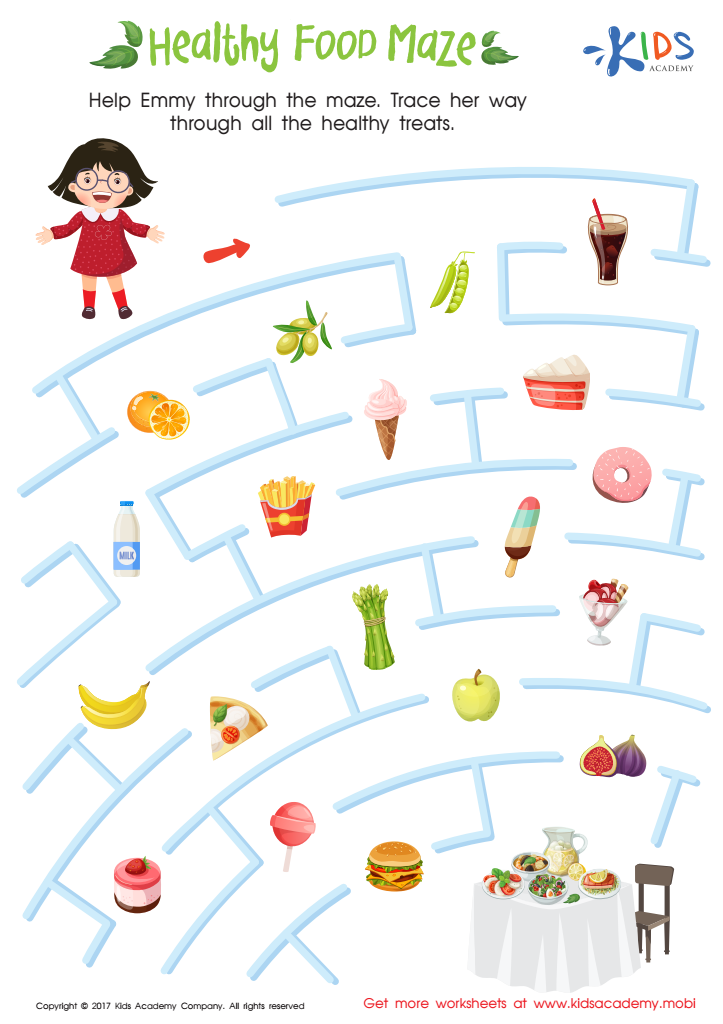Directional navigation Worksheets for Kids
1 filtered results
-
From - To


Healthy Food Maze Printable
Question/Answer
Why is the Directional navigation skill important for Grade 2 students?
The Directional navigation skill is crucial for Grade 2 students because it enhances their spatial awareness, critical thinking, and problem-solving abilities. It helps them understand and follow directions, improves their map-reading skills, and fosters independence. These skills are foundational for academic success and daily life, supporting learning in subjects like math, science, and social studies.
What are some effective activities to train students’ Directional navigation skill when teaching them about Our Body and Health?
To train students' directional navigation skills in a context of Our Body and Health, consider activities like a body parts scavenger hunt, where students follow directions to locate anatomical landmarks. Another effective activity is “Simon Says” with anatomical directions, such as “Simon says, touch your anterior knee.” These activities combine physical movement with directional language, enhancing spatial and anatomical understanding.
How to train the Directional navigation skill in Grade 2 students learning about Our Body and Health?
To train Directional navigation in Grade 2 students learning about Our Body and Health, create a fun, interactive map of the human body. Assign each student a "destination" (e.g., heart, lungs, stomach). Using directional cues (left, right, up, down), guide them through the body map to reach their destination, reinforcing anatomical positions and the relationships between different body parts.

 Assign to My Students
Assign to My Students




















